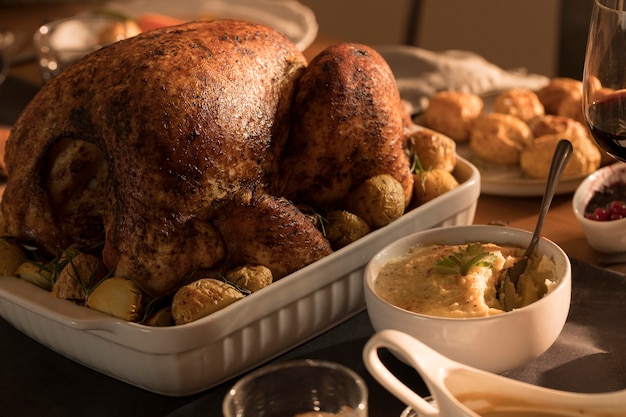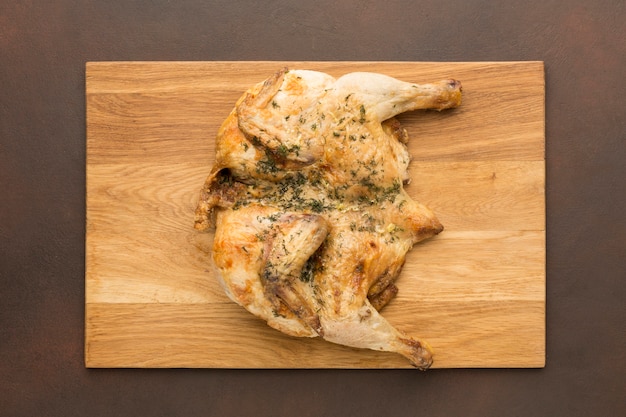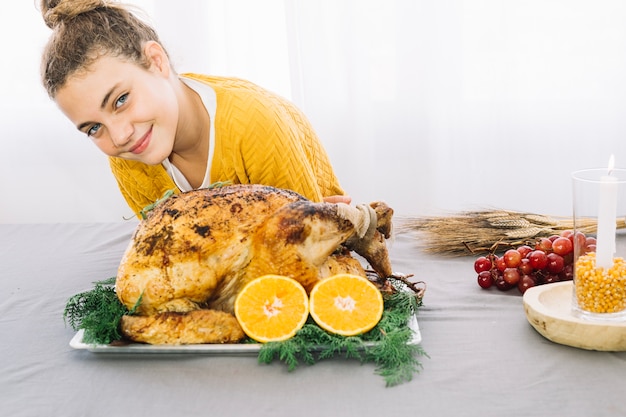Let's be honest, we've all been there. You're staring at a chicken breast, a pang of hunger gnawing at your stomach, and a desire to create a delicious dinner fills your heart. But then the question pops up: "How long do I cook this thing at 400 degrees Fahrenheit?" It's a question I've wrestled with for years, and I've learned a thing or two along the way. It's been a journey, let me tell you, with some triumphs and some… well, let's just say there have been a few "experiments" that ended up less than appetising. But, like a seasoned chef sharing their secrets, I'm here to guide you through the minefield of chicken breast cooking and steer you toward juicy, succulent perfection.
Part 1: The Basics: Why 400 Degrees Fahrenheit?

Let's tackle the basics first, shall we? Why 400 degrees Fahrenheit? It's a great starting point for cooking chicken breasts because it's hot enough to cook them through without drying them out, leaving you with a deliciously tender centre. Plus, it often gives you that lovely crispy skin if that's your thing. Now, I'm not saying it's the only temperature that'll work, but it's a great starting point, especially for a beginner. And once you've got the hang of it, you can experiment with different temperatures to find what suits your style and taste buds. But for now, let's keep things simple and build a strong foundation, yeah?
Part 2: The Size Matters!

2.1 Understanding the Thickness
Alright, so you've got your oven at 400 degrees, but now we need to talk about the chicken itself. The size of the chicken breast is crucial for determining cooking time. A thin, delicate breast cooks much faster than a thick, juicy one. In my early days of cooking, I thought I could just throw any chicken breast in for the same amount of time, but let me tell you, that was a recipe for disaster. You'd end up with some parts overcooked and dry, while others remained raw. It was a tragedy, a culinary crime!
2.2 How to Measure Thickness
So, how do you measure the thickness of your chicken breast? Well, I like to use a trusty ruler. Just place it at the thickest part of the breast and see how many inches it is. If you don't have a ruler handy, you can always use your fingers. A thin breast is about the width of your thumb, a medium breast is about the width of your hand, and a thick breast is about the width of your forearm. See? Easy peasy.
2.3 A Table for Your Convenience
Now, because I'm a nice chap, I've created a handy table to guide you on cooking time based on breast thickness. Remember, these are just guidelines. You might need to adjust the time a bit depending on your oven, the specific chicken you're using, and even how much you like your chicken cooked. But it's a great starting point, and you can always check the chicken's internal temperature to make sure it's cooked through.
| Thickness (inches) | Cooking Time (Minutes) |
|---|---|
| 0.5 - 1 | 15 - 20 |
| 1 - 1.5 | 20 - 25 |
| 1.5 - 2 | 25 - 30 |
| 2 - 2.5 | 30 - 35 |
Part 3: The Art of Preheating

Alright, so you've got your chicken ready and your oven set to 400 degrees Fahrenheit. But before you even think about putting that chicken in, you need to preheat your oven! This is a step that many people skip, but it's essential. A preheated oven ensures that the chicken cooks evenly and doesn't get stuck in a cold spot. It also helps to create that lovely crispy skin.
How long does preheating take? Most ovens need about 10-15 minutes to reach the desired temperature. So, start preheating as soon as you've got your chicken prepped and ready to go.
Part 4: The Big Reveal: The Chicken is in the Oven!
Alright, your oven is preheated, you've got your chicken prepped, and you're finally ready to get cooking! Now, before you just throw the chicken onto a baking sheet, remember that parchment paper is your best friend. Line your baking sheet with parchment paper to make clean-up a breeze. Plus, it helps to prevent the chicken from sticking.
Now, you have a choice: cook your chicken breasts with or without the skin on. I personally prefer cooking it with the skin on. It helps to keep the chicken moist and develops a delicious crispy texture in the oven. However, if you're watching your fat intake, feel free to remove the skin before cooking.
4.1 Skin Side Up? Skin Side Down?
This is the eternal debate, isn't it? Skin side up or skin side down? I've tried both, and honestly, there's no clear winner. If you're chasing that crispy skin, I would recommend skin side up. However, if you prefer a more evenly cooked breast, skin side down is the way to go. It really comes down to personal preference and what you're looking for. I personally prefer skin side down for a bit more moisture, but I'll be honest, I'm not a huge fan of crispy skin.
4.2 Space Out Your Birds!
Right, so you've got your chicken on the baking sheet. But don't just cram all the breasts in there like a sardine can! Leave some space between each one. This allows the hot air to circulate properly, ensuring that the chicken cooks evenly. You don't want to end up with some parts cooked and others raw, do you?
Part 5: The Oven Timer: Your New Best Friend
Now, you've got your chicken in the oven, the timer's set, and you're thinking, "Right, now I can relax!" But hold on, my friend. While the oven is working its magic, you can't just ignore it completely. You need to keep an eye on it and check the chicken's internal temperature.
Remember those guidelines we talked about earlier? They are just that, guidelines. The actual cooking time can vary depending on the thickness of the chicken breast, your oven, and even the brand of chicken you're using. That's why it's so important to check the internal temperature.
Part 6: The Crucial Step: Checking the Temperature
Okay, you're probably thinking, "How do I check the internal temperature?" Well, you're going to need a trusty meat thermometer. It's an essential tool for any kitchen, and it's definitely worth investing in. Just insert the thermometer into the thickest part of the chicken breast, making sure it doesn't touch the bone. The chicken is cooked through when the internal temperature reaches 165 degrees Fahrenheit.
Now, I know what you're thinking, "But what if I don't have a thermometer?" Well, if you're in a bind, you can always check the chicken by cutting into it. If the juices run clear and there's no pink left, then it's cooked. But, I always recommend using a thermometer, just to be safe.
Part 7: The Resting Period: Let the Chicken Breathe
Alright, so the chicken is cooked, you're practically drooling, and you're ready to dig in. But hold your horses! Before you grab a fork, let the chicken rest for about 5-10 minutes. This will allow the juices to redistribute, so you end up with a super moist and tender breast.
I know, it's hard to wait, but trust me, it's worth it. While the chicken is resting, you can get your sides ready and start plating everything up. It's also a good time to pour yourself a glass of wine, because let's face it, you deserve it after all that effort.
Part 8: Adding Flavor: The Finishing Touches
Right, so your chicken is cooked, rested, and ready to eat. But what about flavor? You don't want a bland, boring breast, do you? There are endless possibilities when it comes to adding flavor.
8.1 Marinades: A Flavour Blast
One of my favourite ways to add flavour is to marinate the chicken before cooking. You can use anything from a simple lemon and herb marinade to a more complex blend of spices. I like to use a marinade that's a bit acidic, like lemon juice or vinegar, as it helps to tenderize the chicken.
Here are a few marinade ideas to get your creative juices flowing:
- Citrus Burst: Mix lemon juice, olive oil, garlic, and fresh herbs like rosemary or thyme.
- Sweet & Spicy: Combine soy sauce, honey, ginger, garlic, and a touch of red pepper flakes for a kick.
- Mediterranean Delight: Combine olive oil, red wine vinegar, oregano, garlic, and a pinch of salt and pepper.
8.2 Rubs: A Dry Touch
If you're not a fan of marinades, you can always use a dry rub. Dry rubs are a mixture of spices that you rub onto the chicken before cooking. They add a nice layer of flavour and can also help to create a crispy skin. You can buy pre-made rubs at the supermarket, or you can make your own.
Here are a few dry rub ideas to get you started:
- Classic Herb: Combine dried oregano, thyme, rosemary, garlic powder, and a touch of salt and pepper.
- Spicy Kick: Mix paprika, cayenne pepper, chili powder, garlic powder, onion powder, and a touch of brown sugar.
- Cajun Spice: Combine paprika, cayenne pepper, garlic powder, onion powder, black pepper, thyme, and oregano.
8.3 Sauces: The Perfect Finishing Touch
Finally, you can always add a sauce to your chicken after it's cooked. This is a great way to add a final burst of flavour and moisture. There are countless sauces you can use, from creamy mushroom sauce to a spicy chili sauce. Just find what you like and go for it.
Here are some sauce ideas to consider:
- Lemon-Butter Sauce: Melt butter and whisk in lemon juice, fresh herbs, and a pinch of salt and pepper.
- Creamy Mushroom Sauce: Sauté mushrooms with garlic and onions, then add cream and herbs for a rich sauce.
- Spicy Chili Sauce: Combine chili peppers, garlic, onions, and a touch of vinegar for a fiery kick.
Part 9: FAQs
Now, I've been through the whole process, but I know you're still probably wondering about a few things. So, let's tackle some of those common questions.
- Q: What if I overcook the chicken?
- Q: Can I cook chicken breasts in the oven at a lower temperature?
- Q: Can I cook chicken breasts on the stovetop?
- Q: Can I freeze chicken breasts?
- Q: What's the best way to store cooked chicken breasts?
A: Don't panic! If you overcook the chicken, it might be a bit dry, but it's still safe to eat. You can always try to add some moisture back in by adding a sauce or gravy.
A: Yes, you can, but it will take longer to cook. I usually cook chicken breasts at 350 degrees fahrenheit, which takes about 30-40 minutes.
A: Yes, you can. I prefer to cook chicken breasts in the oven, as I find it gives them a nice, even cook. But if you're looking for a faster method, you can cook them on the stovetop.
A: Yes, you can! Just make sure you wrap them tightly in plastic wrap or aluminum foil, and place them in a freezer-safe bag. They should last in the freezer for about 3-4 months.
A: Store cooked chicken breasts in the refrigerator for up to 3-4 days. You can also freeze them, but they will last for about 2-3 months.
So, there you have it, my friends. My comprehensive guide to cooking chicken breasts at 400 degrees Fahrenheit. Remember, practice makes perfect. Don't be afraid to experiment and find what works best for you.
And, if all else fails, remember that takeaway is always an option!
Everyone is watching

How to Cook Frozen Lobster Tails Perfectly: A Step-by-Step Guide
RecipesLobster. Just the word conjures up images of lavish meals, special occasions, and a taste of luxury. But let's...

Pigs in a Blanket Cooking Time: How Long to Bake for Perfect Results
RecipesAh, pigs in a blanket. Just the name conjures up images of those delightful little parcels of crispy pastry en...

Pork Fillet Cooking Time: How Long to Cook It Perfectly
RecipesPork fillet, or tenderloin as it's sometimes called, is a real favourite in our house. It's so versatile, and...

The Ultimate Guide to Tender, Juicy Pulled Pork
RecipesRight, let's talk pulled pork. It's one of those dishes that just screams "comfort food," doesn't it? I mean...

The Ultimate Guide to Cooking Sweet Potatoes: From Roasting to Mashing
RecipesSweet potatoes. Just the name conjures up images of warm, comforting dishes, bursts of vibrant color, and a to...
